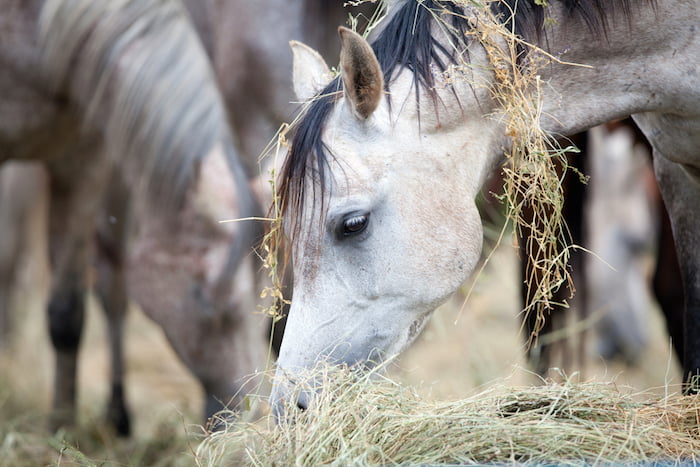
Are our weeds purely a cosmetic blemish in our horsey heaven, or do they actually present a danger to our horses? HQ tackles South Africa’s potentially dangerous weeds with advice on how to identify them, what dangers they present, and how to manage or eradicate them.
South African ragwort
The first weed that we tackle is ragwort, known and feared around the world for being a killer of cattle and horses. As with many plant species, not all ragwort is toxic and some species are even used in herbal medicine. In the last few years, South African horse owners have taken particular notice of our ragwort species and have started to fear the implications for our horses. It’s possible that an increasing number of horses on steadily decreasing acreage may have something to do with this. As suitable grazing becomes scarcer, horses may be more likely to eat ragwort if they are exposed to it.

Distribution and identification
South African ragwort – Senecio madagascariensis and Senecio inaequidens – are found prolifically throughout South Africa and are an invasive herbaceous perennial plant. They grow to between 60 and 100cm tall and produce between two and 200 small, daisy-like, golden-yellow flowers. The leaves of the plant are long and narrow. They grow incredibly quickly and outgrow most indigenous grasses and low-growing plants.
Worrying symptoms in your horse
- Drowsy appearance and ‘flat’ or overly, uncharacteristically excitable
- Hard or no droppings
- Diarrhoea
- Staggering gait
- Jaundiced mucosa
- Reluctance to move
- Abdominal pain
Molteno disease
South African ragwort species have been linked to Molteno disease in livestock. Named after the Molteno Farmers’ Association of South Africa, who investigated it, Molteno disease is a frequently fatal intoxication of southern African cattle, marked by liver injury and extreme emaciation. Its effects on horses are similar and are brought about by the liver’s reaction to toxins in the plants that form its defence mechanism against insects.
Symptoms in horses include drowsiness, with a staggering gait. Secondary gastric impaction and rupture has been reported in horses. It should be noted that horses will not usually choose to eat ragwort unless there is no other grazing available; however, some horse owners have noted that they do not actively avoid it. Most cases of toxicity in horses have been traced back to contamination of hay.
Treatment
According to Black’s Veterinary Dictionary, there is no specific treatment for ragwort poisoning, although Methionine has been reported to be helpful. Treatment is supportive and case-specific and should be administered by your veterinarian. It is very often focused on liver support and treatment.
Eradication
The most successful method of ridding your land of Senecio madagascariensis and inaequidens is to prevent it from going to seed. Pulling the plant out by the roots or constantly cutting before it goes to seed will prevent the plant from spreading.

Pasture management
Ideally, we need to manage our properties so that the problem of weeds, especially toxic ones, never rears its head. In reality, many of us do not have enough water to irrigate, and not enough space to be able to fertilise and rest paddocks. The recent drought in South Africa brought this message home clearly last year as property owners battled grazing shortages well into the normal rainy season.
Nature abhors a vacuum, and if your ground is overgrazed and has lots of bare soil, weeds will become a much bigger problem. Mulching heavily with a good-quality, weed-free compost is a wonderful way of preventing weeds from germinating.
Horse safety
As dedicated horse owners, while we regularly educate ourselves, we often neglect to educate our grooms, who probably spend more time with and around our horses than we do. Take the time to teach your groom to check your hay, and to put aside anything that they are unhappy with, until you get there.
Hay safety
- Check that the hay smells fresh and sweet, not musty, and that it’s properly dry.
- Ensure that it is a healthy colour, with no mould or fungal spores in it.
- Check that it is free of weeds, wire, string and rubbish.
- Loosen and shake the hay out before filling hay nets or bars, or putting it loose in the stable.
- Store hay properly, with proper ventilation.
Text: Mandy Schröder

